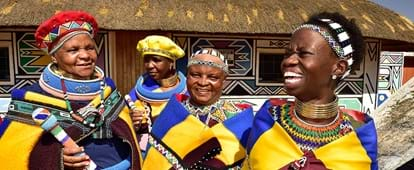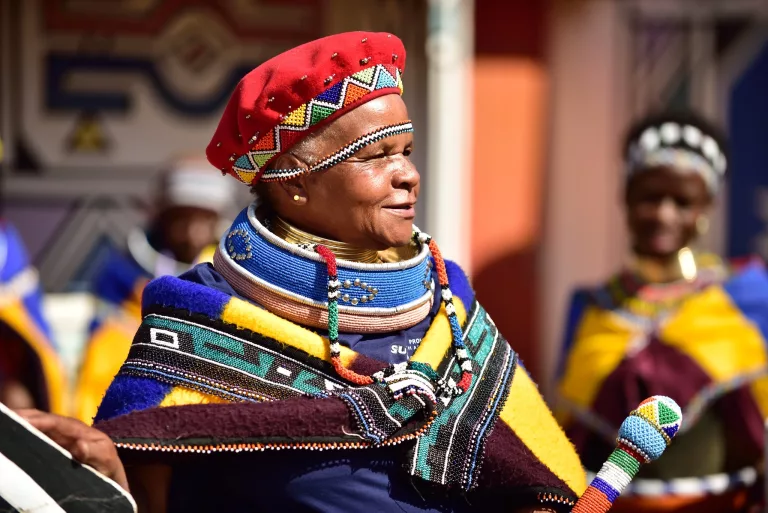The Basic Principles Of South African Culture Today
Table of ContentsExcitement About South African Culture TodayThe 2-Minute Rule for South African Culture TodaySouth African Culture Today for DummiesMore About South African Culture TodaySouth African Culture Today Can Be Fun For EveryoneFascination About South African Culture Today
An issue of value in Zambian towns is the passing away of loved ones. All members of the village put money, time and initiative with each other for the funeral of the deceased.Throughout the grieving duration; men stay outside your home and the ladies stay inside your home of the deceased. After discussing the dead, the town walks to the location of interment to state their last bye-byes. Songs and dancing is a really vital facet of the Zambian society. The various tribal units have their own dance forms; however, makishi is common amongst all tribes.
The Basic Principles Of South African Culture Today
When it comes to songs, drums are used the most, with a selection of drumming ceremonies. In Zambia, bulk of the people are Christian; Protestant and Roman Catholic. There are little teams of Muslims and Hindus, with the remainder complying with local native tribal ideas.

South African heritage and society is tremendously diverse, and includes numerous different groups of people that each have their own customs and beliefs. Having such a diversity of people and cultures is what makes South Africa so unique. In real sense of the expression, we are a rainbow nation.
South Africa has approximately three hundred thousand Portuguese individuals staying in it. Making it the 7th on the list of countries with one of the most Portuguese individuals in it beyond Portugal. Portuguese is not just a society, however it is likewise a language and a citizenship. Portuguese people originate from the nation of Portugal in Europe, nonetheless, because of Portugal (like lots of various other nations in Europe) checking out the world and conquering various other nations during the 15th 20th centuries, South Africa has what we call Portuguese South African's living in it.
The Of South African Culture Today
Amongst the popular attributes of the topography is a plateau that covers practically 2 thirds of the center of the country. The plateau facility rises towards the southeast, where it culminates in the Drakensberg range, component of a cliff that separates the plateau from the coastal areas. The Drakensburg consists of Sparkling wine Castle, the greatest optimal in the country.
The area north of the Witwatersrand, called the bushveld, inclines downward from east to west toward the Limpopo River, which creates the international border. The western area of the plateau, the middleveld, additionally descends towards the west and differs in altitude between the highveld and bushveld. Between the Drakensburg and the eastern and southern coast, the land comes down to the sea.
Nearer the coast there is a low-lying plain called the eastern lowveld. Southwest of the plateau the nation comes to be progressively a lot more dry, paving the way to the stony desert of the Great Karroo, approached the eastern by the reduced, better watered plateau of the Little Karroo. Separating the dry southern interior from the sandy coastal of the southern shore and West Cape is an additional variety, the Langeberg.
Facts About South African Culture Today Revealed
The country's racially, ethnically, and politically split history has produced national and subnational icons that still operate as icons of the nation, and others signs that are accepted only by particular teams. The monoliths to white inhabitant conquest and political dominance, such as the Afrikaner Voortrekker ("pioneer") Monolith in Pretoria and the Rhodes Monolith honoring the British colonial empire contractor and Cape prime preacher Cecil Rhodes, continue to be sectarian signs.
The very first modern-day residents were the San ("bushman") hunter-gatherers and the Khoi ("Hottentot") individuals, who rounded up livestock (South African culture today). The San may have been present for countless years and left evidence of their presence in hundreds of old cave paints ("rock art"). Bantu-speaking clans that were the forefathers of the Nguni (today's amaZulu, amaXhosa, amaSwazi, and vaTsonga peoples) and Tswana-Sotho language groups (today's Batswana and Southern and Northern Basotho) moved down from eastern Africa as read here early as the fifteenth century

The two former republics of the Orange Free State and Transvaal (South African Republic) were developed by Afrikaner settlers who beat and dispossessed the Basotho and Batswana. Lesotho would certainly have been forcibly integrated right into the Orange Free State without the extension of British security in 1869. The best unification of the country arised from the South African Battle (18991902) between the British and both Afrikaner republics, which minimized the nation to destroy at the start of the twentieth century.
Afrikaners traditionally considered themselves the just true South Africans and, while giving complete citizenship to all homeowners of European descent, denied that status to people of color till the autonomous change of 1994. British South Africans retain a sense of cultural and social link to Great Britain without weakening their identity as South Africans.
The Of South African Culture Today
The variety and fragmentation within ethnic collections and the balance of tensions between those teams throughout the twentieth century protected against interethnic civil problem. While intergroup stress over sources, entitlements, and political dominance remain, those problems are as most likely to match Zulu against Zulu as Zulu against Xhosa or African versus Afrikaner.
From colonial India, British vendors and administrators brought the curved steel decorative roofings and slender lace job pillars that still symbolize the terraces of cottages arounds and cities throughout the country. Holy places add a crucial architectural facet even in the tiniest towns. In addition to click site the skyrocketing steeples and classic stonework of Afrikaans Dutch Reformed churches, Anglican churches, synagogues, mosques, and Hindu shrines provide range to the spiritual architectural scene.

Slaughtering and the developing of traditional cereal beer are crucial in securing the involvement and a read the full info here good reputation of the ancestors who are taken into consideration the guardians of good luck, success, and health. Indian communities maintain their indigenous cooking customs and use them on Islamic and Hindu routine and ritualistic occasions. Afrikaners and Coloured people collect at weekend breaks and unique celebrations at multifamily barbecues called braais, where community bonds are enhanced.
Since this was the key financial venture of both black Africans and white colonists, conflict between those groups centered on the ownership of grazing land and animals. In 1867, the biggest ruby down payments worldwide were uncovered at Kimberley in the west main location. The wide range from those areas aided fund the exploitation of the greatest gold reef worldwide, which was discovered on the Witwatersrand in 1886.
The Best Strategy To Use For South African Culture Today
This led to misunderstandings and deliberate misstatement in the negotiations of white settlers and government authorities with African chiefs during the early american period (South African culture today). In the establishment of African gets, some elements of communal and primarily "tribal trust fund" land period were preserved, and also in white backwoods, kinds of common tenure were still exercised in areas with African areas
After the democratic transformation of 1994, programs for land restitution, redistribution, and reform were set up, but progression has been slow. The white minority still manages eighty percent of the land. In the wake of farming land invasions in Zimbabwe, the Division of Land Affairs has pledged to speed up land redistribution.